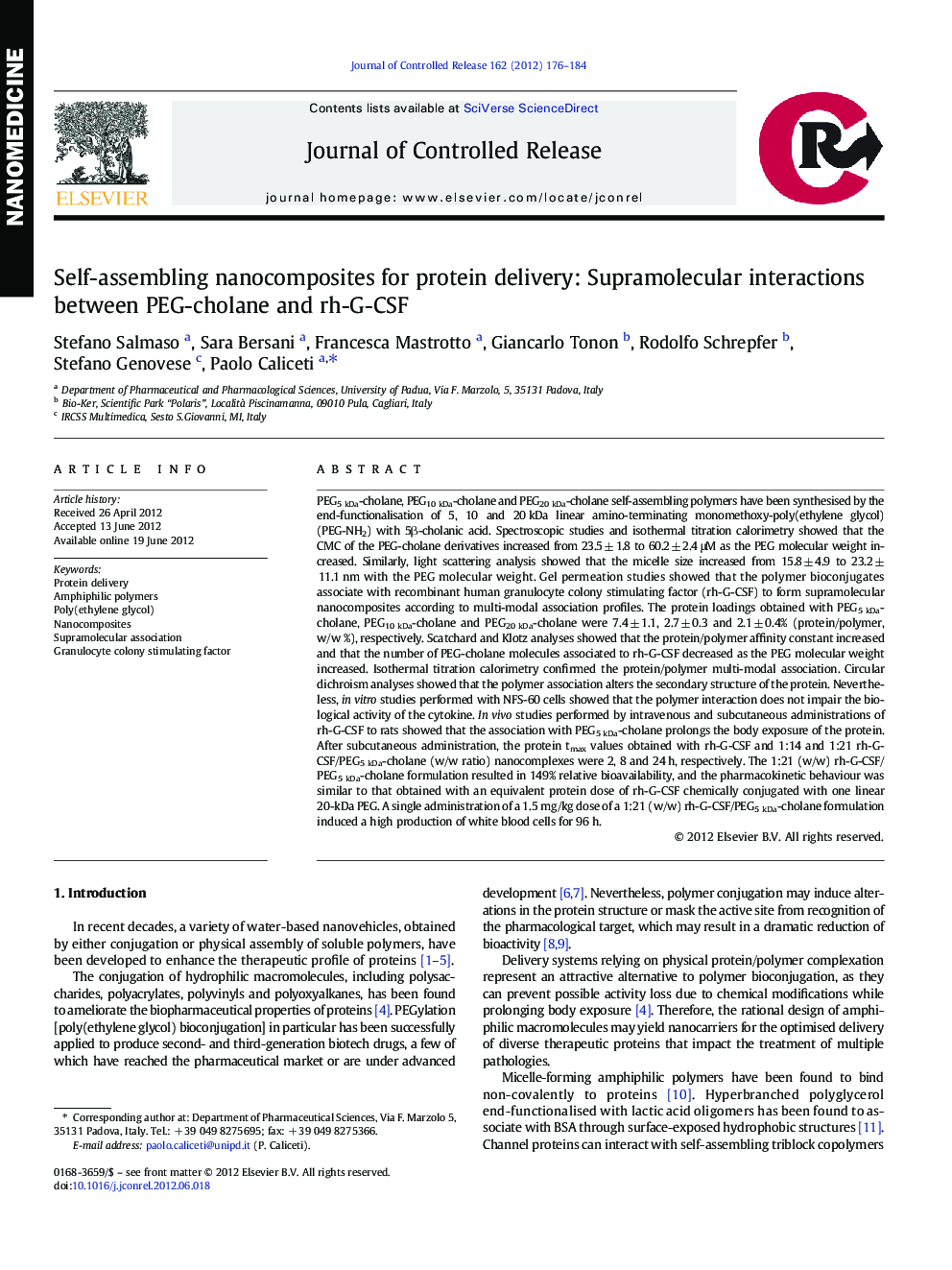| کد مقاله | کد نشریه | سال انتشار | مقاله انگلیسی | نسخه تمام متن |
|---|---|---|---|---|
| 1424594 | 986730 | 2012 | 9 صفحه PDF | دانلود رایگان |

PEG5 kDa‐cholane, PEG10 kDa‐cholane and PEG20 kDa‐cholane self‐assembling polymers have been synthesised by the end-functionalisation of 5, 10 and 20 kDa linear amino‐terminating monomethoxy‐poly(ethylene glycol) (PEG‐NH2) with 5β‐cholanic acid. Spectroscopic studies and isothermal titration calorimetry showed that the CMC of the PEG‐cholane derivatives increased from 23.5 ± 1.8 to 60.2 ± 2.4 μM as the PEG molecular weight increased. Similarly, light scattering analysis showed that the micelle size increased from 15.8 ± 4.9 to 23.2 ± 11.1 nm with the PEG molecular weight. Gel permeation studies showed that the polymer bioconjugates associate with recombinant human granulocyte colony stimulating factor (rh‐G‐CSF) to form supramolecular nanocomposites according to multi‐modal association profiles. The protein loadings obtained with PEG5 kDa‐cholane, PEG10 kDa‐cholane and PEG20 kDa‐cholane were 7.4 ± 1.1, 2.7 ± 0.3 and 2.1 ± 0.4% (protein/polymer, w/w %), respectively. Scatchard and Klotz analyses showed that the protein/polymer affinity constant increased and that the number of PEG‐cholane molecules associated to rh‐G‐CSF decreased as the PEG molecular weight increased. Isothermal titration calorimetry confirmed the protein/polymer multi‐modal association. Circular dichroism analyses showed that the polymer association alters the secondary structure of the protein. Nevertheless, in vitro studies performed with NFS‐60 cells showed that the polymer interaction does not impair the biological activity of the cytokine. In vivo studies performed by intravenous and subcutaneous administrations of rh‐G‐CSF to rats showed that the association with PEG5 kDa‐cholane prolongs the body exposure of the protein. After subcutaneous administration, the protein tmax values obtained with rh‐G‐CSF and 1:14 and 1:21 rh‐G‐CSF/PEG5 kDa‐cholane (w/w ratio) nanocomplexes were 2, 8 and 24 h, respectively. The 1:21 (w/w) rh‐G‐CSF/PEG5 kDa‐cholane formulation resulted in 149% relative bioavailability, and the pharmacokinetic behaviour was similar to that obtained with an equivalent protein dose of rh‐G‐CSF chemically conjugated with one linear 20‐kDa PEG. A single administration of a 1.5 mg/kg dose of a 1:21 (w/w) rh‐G‐CSF/PEG5 kDa‐cholane formulation induced a high production of white blood cells for 96 h.
Figure optionsDownload high-quality image (84 K)Download as PowerPoint slide
Journal: Journal of Controlled Release - Volume 162, Issue 1, 20 August 2012, Pages 176–184